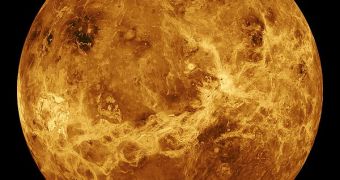The surface of our neighboring planet, Venus, is not exactly the type of place you would call life-friendly. Chances of lifeforms enduring there are close to zero, experts say, and yet somehow not the same can be argued about its atmosphere.
According to some, forms of primitive life may still exist in the mixture of gases that passes for air on Venus. And astronomers don't stop here – they say that they want a sample mission to retrieve any potential “inhabitant” that may be hiding there.
Over the years, several spacecraft have made their way to the planet, and have analyzed it to some extent. Still, we know a lot less about it than we do about Mars, for example. The Red Planet has been studied non-stop for decades.
Yet, while theories suggest that life may exist on Mars too, it's Venus that could hold the biggest surprise for astrobiologists. But this mystery can easily be solved, scientists say, by simply sending a flying balloon to the planet, to try and trap Venusian life.
On the planet's surface, temperatures are so high that they can vaporize mercury, and turn solid tin into a puddle. Pressure levels exceed Earth's 20 times over, and organic materials and structures are unlikely to exist. The chances of them having adapted to these conditions are minimal.
But, oddly enough, the atmosphere is surprisingly Earth-like. High enough above the surface, clouds have the same temperature and pressure levels as those here. Studies have also demonstrated that the chemical composition of the clouds is very similar to that of our planet billions of years ago.
In other words, the Venusian atmosphere looks a lot like the place where life first developed here on Earth. This is a promising lead for many, and even skeptics admit that the possibility needs to be explored in further detail.
What the atmosphere around Venus has and ours doesn't is sulfuric acid. As extreme heat boiled off our neighbor's oceans, the water that resulted was combined with sulfur to produce the acid, which now permeates everything. Still, it does not eliminate heat and water from the atmospheric equation.
Regardless of how much we analyze the place remotely, the fact of the matter remains that we need to send a space probe capable of sampling that atmosphere directly.
It's only in this manner that we can be certain that life indeed exists (or does not) on our neighboring planet's surface, Daily Galaxy reports.

 14 DAY TRIAL //
14 DAY TRIAL //